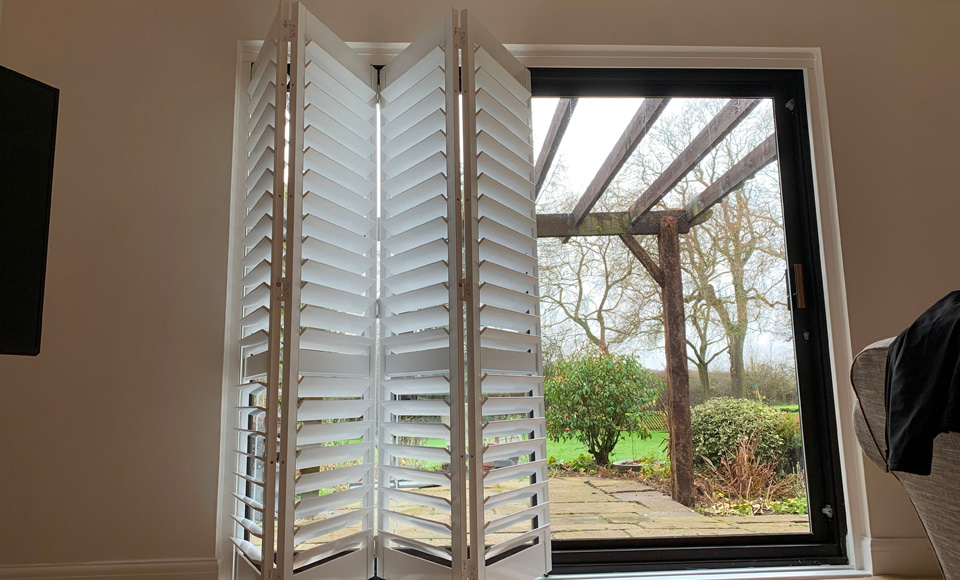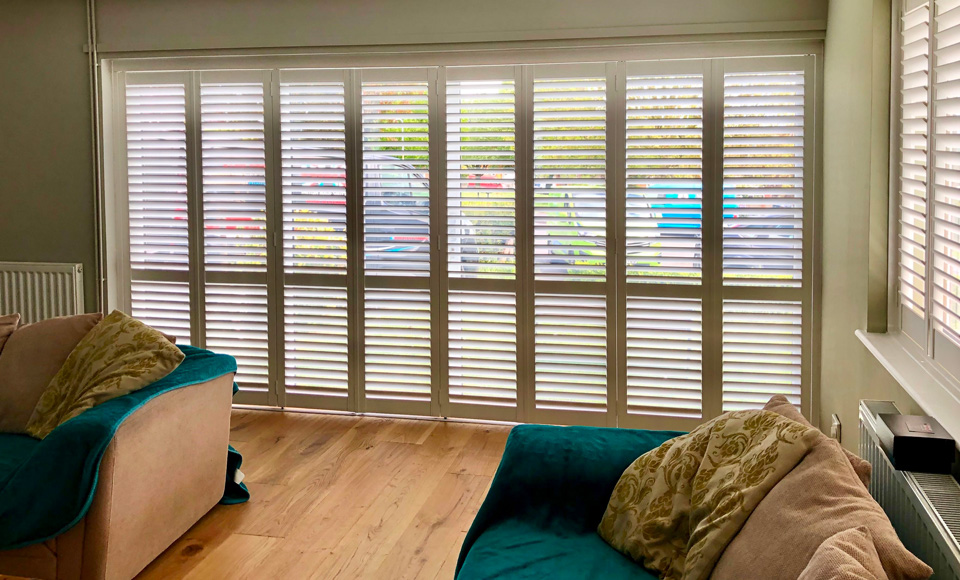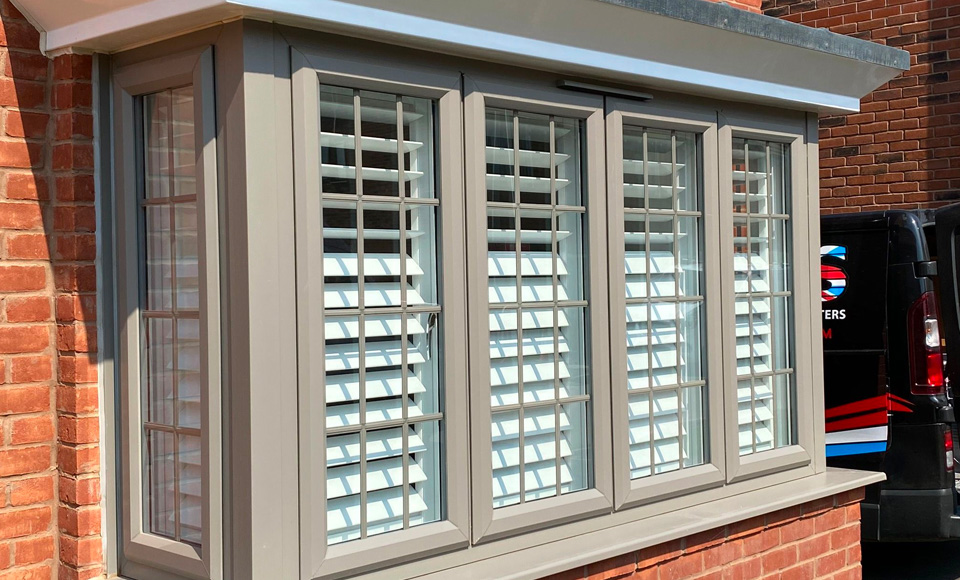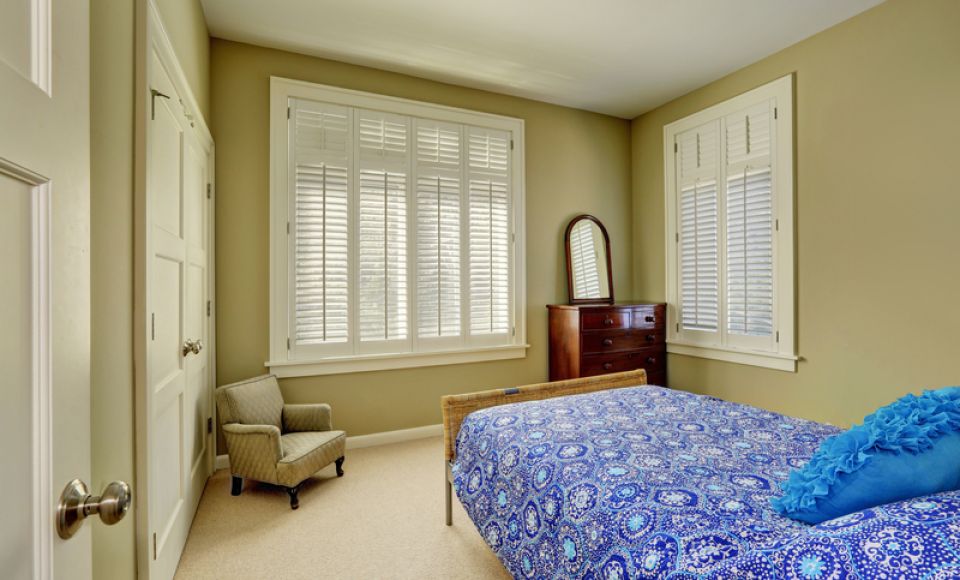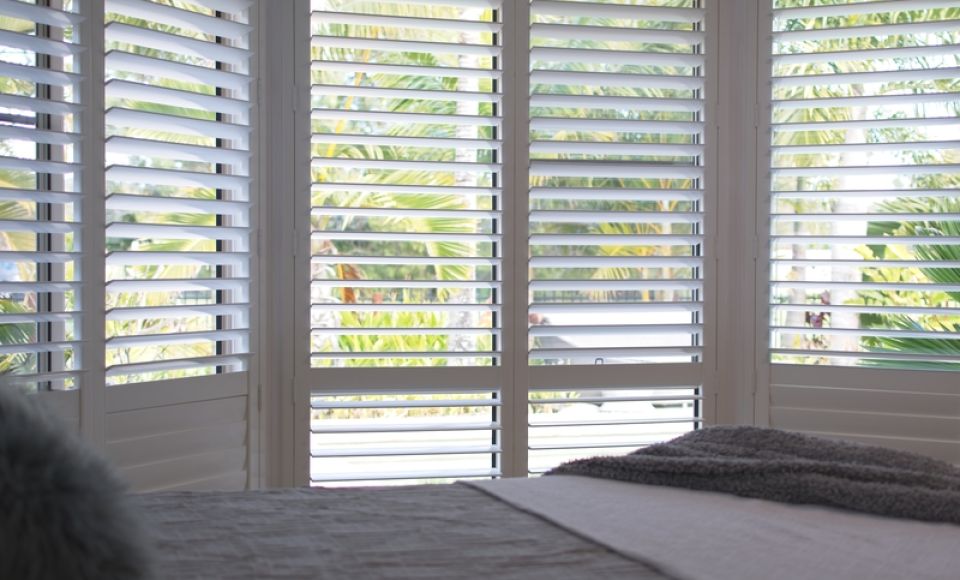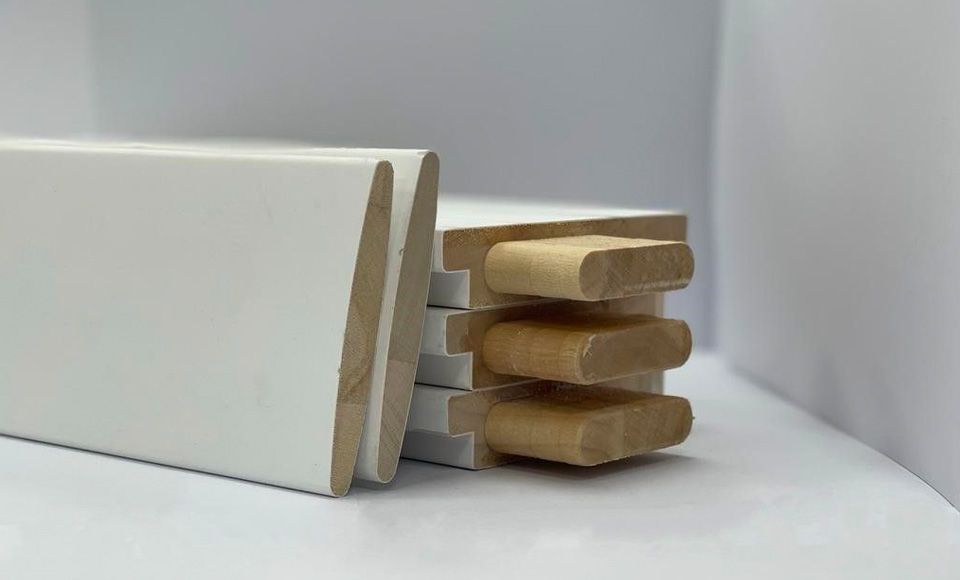
How to make Window Shutters?
Window shutters can be a game-changer when it comes to transforming ordinary windows into stunning focal points of your home. Not only do they provide privacy and control over natural light in your room, but they also enhance the overall aesthetic appeal of your home without having to go down the blackout curtains route. But how are they made?
Unlike traditional blinds, the intricate process behind creating these functional and aesthetically pleasing window shutters is incredibly thorough. In this blog post, we will delve into the artistry and craftsmanship involved in making window shutters.
The Artistry of Crafting Window Shutters
Window Shutters are not only an excellent stylistic choice for your home but also an efficient one. To understand how they're made, you need to consider why they're made. Window shutters offer a range of benefits for your home that regular blinds or curtains cannot. Let's take a look at some of the benefits below.
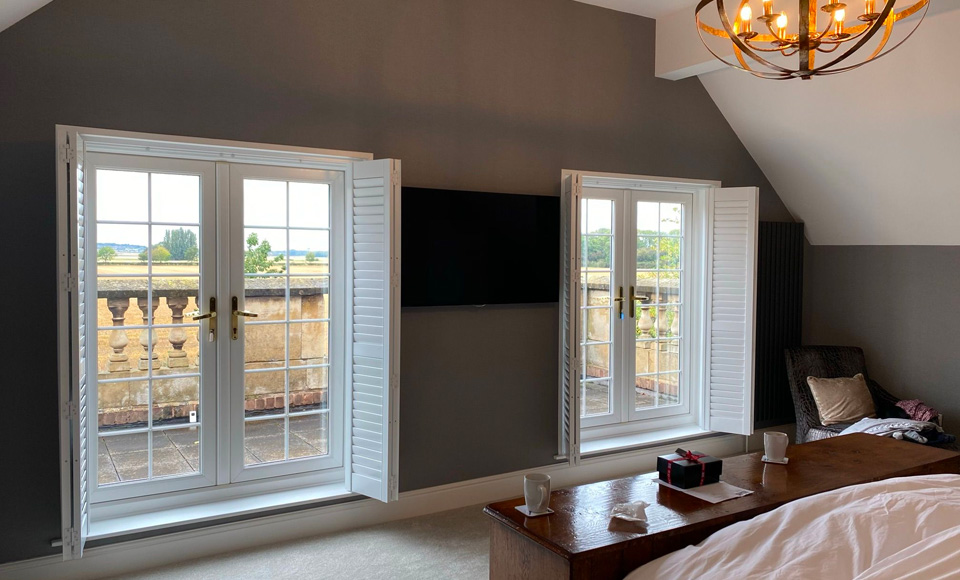
Benefits of having Window Shutters
Energy Efficiency:
Window shutters provide insulation and can help regulate the temperature inside your home, reducing the need for excessive heating or cooling.
Security:
Shutters add an extra layer of security to your windows, acting as a deterrent to potential intruders.
Visual Appeal:
Window shutters enhance the aesthetics of your home, adding a stylish and elegant touch to the exterior and are a statement of style and sophistication.
Light Control:
With shutters, you can easily adjust the amount of natural light entering your space, allowing you to create the desired ambience.
Privacy:
Shutters offer excellent privacy control, allowing you to block the view from the outside while still allowing light to filter through.
Noise Reduction:
Shutters can act as a sound barrier, reducing external noise and creating a quieter atmosphere within your home.
Protection from the Elements:
Exterior shutters provide additional protection against harsh weather conditions like rain, wind, and storms.
Increased Home Value:
Installing window shutters can increase the resale value of your home, making it a desirable feature for potential buyers.
Types of Window Shutters
Before diving into the manufacturing process, it is a good idea to familiarise yourself with the different types commonly found in the market. The most popular types include:
Plantation shutters
A plantation shutter is an interior window covering consisting of adjustable louvres set within a solid frame. These shutters are typically made of wood or composite materials and designed to be installed inside the window frame.
Tier to Tier Shutters
A tier-on-tier shutter is a type of window covering that consists of two separate sets of panels, one on top of the other. Each set of panels can be operated independently, allowing for greater control over light and privacy.
Café style Shutters
A café style shutter is a type of window covering that partially covers the lower portion of a window, leaving the upper part exposed. These shutters are designed to mimic the aesthetic of traditional European cafes, where they are commonly used.
Whether you're drawn to the classic charm of plantation shutters or the rustic appeal of wooden designs, understanding the process behind their creation can deepen your appreciation for these architectural elements.
So, how do you make window shutters?
Making window shutters can be a complex process that involves several steps. The first step is to find a good manufacturer that offers the services you need. Check your local options and availability when researching, as you will likely need to find specialists to fit your shutters.
Any company will first need the measurements of your window/space. The measurement is crucial to ensure the installation process is accurate and clean, whether it's large windows, small windows, doors, or an adjoining wall.
Measure the Window Frame:
Whether it's a bay window, UPVC windows, or any full-height area, determine your window frame's width, height, and depth. You can always contact your chosen company for help; sometimes they will come and do the measurements for you.
- Measuring at multiple points to account for irregularities is essential to ensure a precise fit for your shutters.
Mounting Options:
You will then need to decide how to mount your shutters. There are two standard options: inside mount and outside mount. Inside-mount shutters fit within the window frame, while outside-mount shutters are installed outside the frame.
- Each option has its own aesthetic and functional considerations, so always pay attention to what works best for your space. For any advice, a specialist can also recommend the best option.
Number of Panels:
The number of panels you want for your shutters will impact their overall design and functionality. Multiple panels may be necessary for larger windows for stability and ease of use. However, you may have some room to play with here when configuring the design.
Choose what material you want to use
When it comes to window shutters, you can choose from a wide range of materials, from faux wood shutters to real wood shutters, based on your preferences and requirements.
Research different styles and consider the architectural aesthetics of your home when selecting a design. Consider whether you want a classic, rustic, or modern look. Most manufacturers can offer free samples so you can choose from the best materials. Let's take a look at some of the most popular types.
Wood:
Real wood shutters offer a timeless and natural look. Different types of wooden shutters, such as basswood, cedar, mahogany, and pine, can be used. Wood shutters can be stained or painted to match your interior or exterior decor. They provide insulation and can be custom-made for a perfect fit.
Vinyl:
Vinyl shutters are known for their durability and resistance to moisture, making them suitable for high-humidity areas such as bathrooms and kitchens. They are low maintenance, easy to clean, and come in various colours and styles.
Composite:
Composite shutters are made from a mixture of wood particles and synthetic materials. They look like natural wood while offering enhanced durability and resistance to warping, cracking, and fading. Composite shutters are popular for high-traffic areas or spaces exposed to extreme weather conditions.
PVC:
PVC shutters, or synthetic shutters, are made from polyvinyl chloride. They are highly durable, water-resistant, and easy to clean. PVC shutters are often chosen for their affordability and suitability for moist environments.
Aluminium:
Aluminium shutters are lightweight, strong, and corrosion-resistant. They are commonly used for exterior shutters, protecting against harsh weather conditions. Aluminium shutters can be powder-coated in various colours to match your home's aesthetics.
It's essential to consider factors such as durability, maintenance, aesthetic appeal, and budget when selecting the material for your window shutters. Each material has its strengths and considerations, so choose the one that best suits your needs and desired look.
The cutting process
After you submit the correct measurement, the manufacturer will review your order specifics - measurements, size, style, and material- and prepare everything to make your new shutters.
Specialised machinery will then cut each frame piece at the precise angle required, per the job description, to fulfil the correct requirements. Let's take a little look at this stage and how it works.
Necessary Tools:
Like most manufacturers, here at British Made Shutters, we have specialised high-quality equipment to make the correct holes and drill techniques for all the different materials and styles. This ensures the quality and longevity of the shutters are not affected by poor installation techniques.
- Certain styles will undergo a particular drilling process to create the correct holes for the rails.
- The machines precisely cut the necessary shutter components, including styles, louvres, rails, hole strips, and frames, which are sorted and labelled.
- After drilling, each louvre undergoes a quality check to ensure that the holes are correctly positioned and of the correct size.
Measurements and quality checks
Once the cuts are complete, we test the fit of the planks within the window frame or designated mounting area to ensure everything works the way it should. We also ensure that they align correctly and leave sufficient space for any necessary adjustments or hardware installation when the shutters are delivered and ready to be fitted.
Double-checking the measurements to ensure accuracy is essential, as even a slight deviation can affect the shutters' final fit. This is why measurements in the beginning are so essential to be perfect. When these stages have passed, there is typically a process where more checks are made - ensuring everything is good to go, packed and ready to be delivered to the customer.
Once the shutters are sanded, finished, and wrapped, they have a final check to ensure the packaging is secure and adequately protected before they make their way to you (or the fitting company).
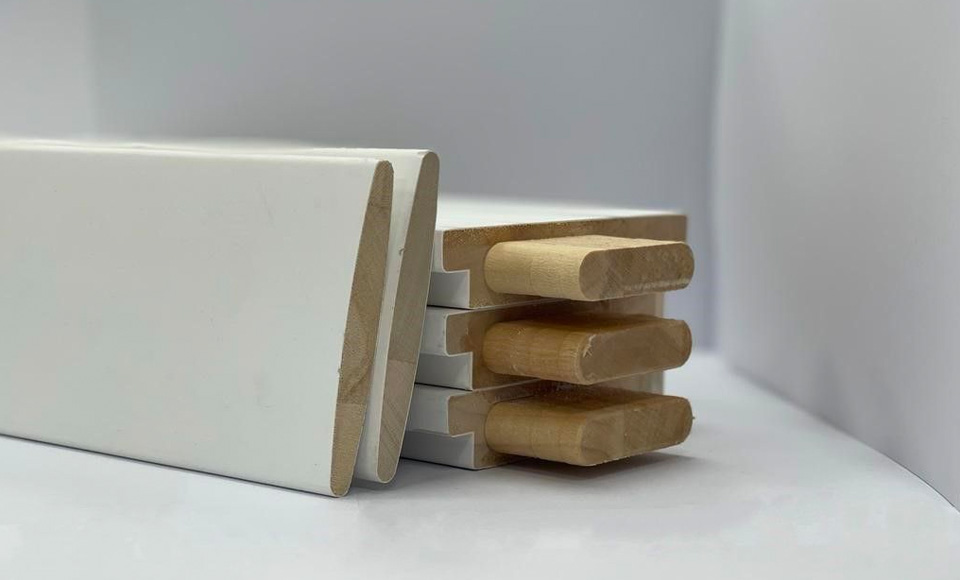
Assembling the Shutters
The next step is getting your shutters fitted - usually by professional installers, but it can be done by yourself if you're a DIY connoisseur. Let's look at how the installation process works so you can get an idea of what to expect from this stage.
- Preparation: The installers will prepare the work area before installing the shutters. This may involve removing any existing window coverings or hardware and protecting the surrounding surfaces with drop cloths or plastic sheets.
- Installation of Mounting Hardware: The installers will then install the necessary mounting hardware. This may include brackets, hinges, tracks, or other components required to attach the shutters to the window frame securely.
- Hanging the Shutters: The installers will carefully hang the shutters on the mounting hardware once the hardware is in place. They will ensure that the shutters are level and aligned correctly. Depending on the type of shutters and the installation method, this may involve attaching the shutters to the hinges or sliding them onto tracks.
- Securing the Shutters: After hanging the shutters, the builders will secure them in place using screws, clips, or other fasteners. They will ensure that the shutters are firmly attached and stable.
- Testing and Adjustments: The installers will test the functionality of the shutters by opening and closing them. They will check for smooth operation and make necessary adjustments to ensure proper alignment and functionality.
- Final Checks and Cleanup: Once the shutters are installed and adjusted, the installers will conduct a final inspection. They will look for gaps, misalignments, or issues needing attention. They will also clean up the work area, removing any debris or leftover materials.
- Client Walkthrough and Instruction: The installers will walk you through the finished product after installation. They will demonstrate how to operate and maintain the shutters and provide any necessary instructions or recommendations for optimal use.
It's a process
During the whole process, there must be constant check-ins. Here at British Made Shutters, we make sure that all our made-to-measure shutter blinds are of a high quality, perfect standard. At every stage, you need to check for any chips, cracks, or breakages so that any necessary replacements can be made.
Here at British Made Shutters, we offer installation training days so that companies can feel confident in providing a high-quality installation service for our shutters. If you want to learn more about shutters, their cost, and how to maintain their upkeep, you can check our other articles for more info. We're here to help you achieve your dream shutter goals - from total blackout, privacy control when opening windows and making your space fit for style and decor. Please Feel free to contact us with any queries or questions.
